This post is going to talk about the 10 knots every Scout should know. You will see the knot in the photo, reference its name and read what that knot is used for. This post is more about understanding the uses of the knot then how to tie it. I find learning to tie a knot is more a hands on kind of thing.
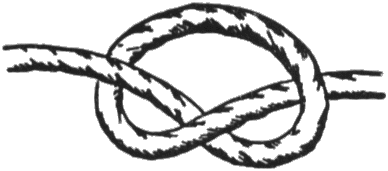 1.Overhand - This is probably a pretty good place to begin to learn tying knots, since it is really just giving a name to something you already know how to do. The overhand knot is really the same as the first part of tying your shoes (assuming you haven't been brought up on Velcro®!). It is very useful to put at the ends of ropes to prevent it from sliding it through holes and the like (hence the classification "stopper knot").
1.Overhand - This is probably a pretty good place to begin to learn tying knots, since it is really just giving a name to something you already know how to do. The overhand knot is really the same as the first part of tying your shoes (assuming you haven't been brought up on Velcro®!). It is very useful to put at the ends of ropes to prevent it from sliding it through holes and the like (hence the classification "stopper knot").
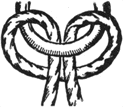
2.Larks head - The Lark's Head knot is used to attach a rope to a spar or ring. This is easy to tie, and it does not jam. However, it will slip fairly easily along the spar, and may slip undone when tied using man made fiber ropes.
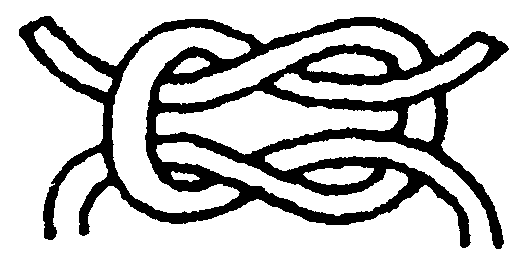
3.Square Knot - Also known as the Reef Knot, this knot was used for centuries by sailors for reefing sails and tying things aboard ship. It is important that this knot should not be used as a bend (for tying two ropes together). It is unsafe and can come apart. Be sure to form the square knot and avoid tying a granny knot, by making sure that both parts of the rope, the standing line and the free end, exit the knot together.
The name "reef knot" dates from at least 1794 and originates from its common use to reef sails, that is to tie part of the sail down to decrease its effective surface area in strong winds. To release the knot a sailor could collapse it with a pull of one hand; the sail's weight would make the collapsed knot come apart. It is specifically this behavior which makes the knot unsafe for connecting two ropes together.
The name "square knot" is found in Dana's 1841 maritime compendium A Seaman's Friend, which also gives "reef knot" as an alternate name. From http://en.wikipedia.org/wiki/Reef_knot
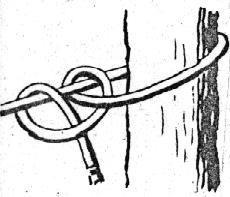
4.Two half hitch - This knot is really just an extension of the half-hitch. Unlike the single half-hitch, this knot will hold a reasonable load when tied properly. An extremely useful and practical knot.
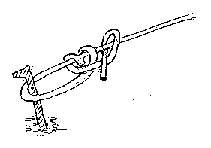
5.Tautline - A taut line, also know as two half-hitches with an extra turn, is used to tighten a line, and is ideal for clothes lines, tents and the like. This would have to rank up there as one of the most useful knots to learn!
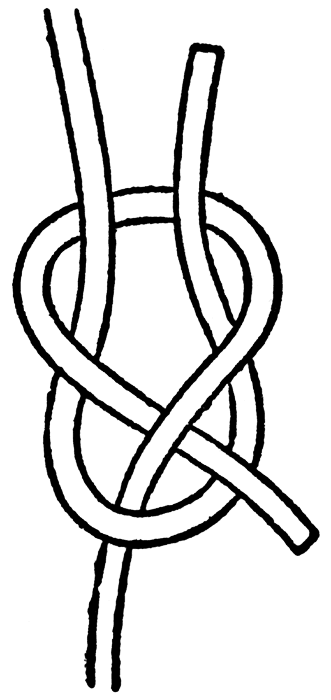
6.Sheetbend - A bend is a type of knot that ties two ropes together. The sheet bend is a quick and easy one that performs this task admirably! It is used when joining two ropes together.
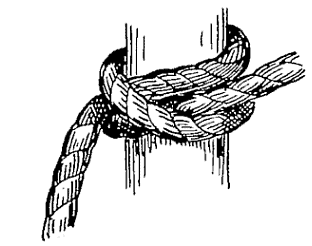
7.Clove hitch - A useful and easy to tie knot, the Clove Hitch is a good binding knot. However, as a hitch it should be used with caution because it can slip or come undone if the object it is tied to rotates or if constant pressure is not maintained on the line.
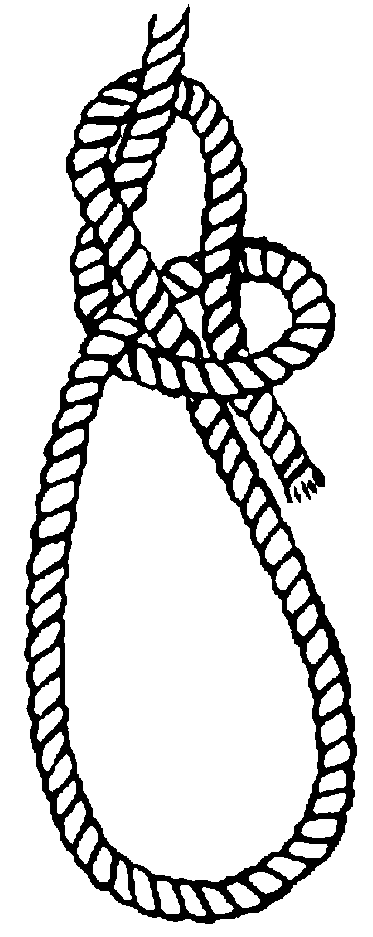
8.Bowline - A classic knot, the bowline is traditionally used by sailors to affix a square sail to the bow (front) of the boat. With uses far beyond sailing, it is a loop that will not slip, and can be tied around objects or lassoed over them.
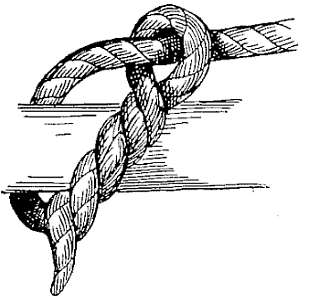
9.Timber hitch - Use for securing a rope around a post or any cylindrical object. It does not jam or slip and is easy to tie and untie.
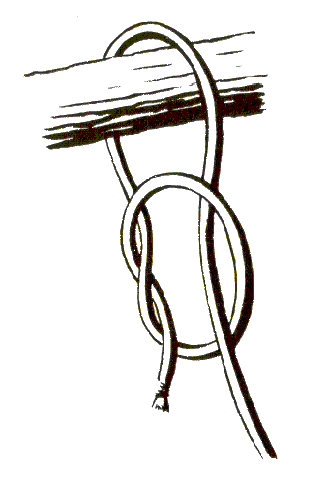
10.Slip knot - A slip knot, also called a running knot, is a broad classification of knots that basically refers to any knot that can "slip" along the rope, and/or can be untied by simply pulling one of the ends. This particular slip knot is sometimes referred to as a simple noose, and has wide range of applications. If you do a little forensic knot analysis on this knot, you will see that it is very, very similar to the overhand knot.
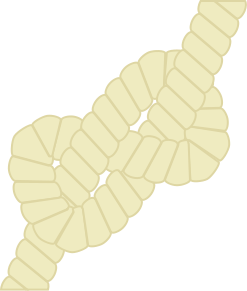
11.(bonus) Figure Eight - An extremely photogenic knot, the figure eight easy to learn and quick to tie. Like the overhand knot, it can be used to tie off ends of rope or to perform "stopper" functions in other knots.
References:
a lot of the knot descriptions came from these sites http://www.iwillknot.com and http://www.netknots.com
The photos I foundusing Google Images...
